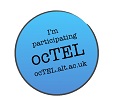Activity:
Your task is to think about the general idea of ‘approaches to learning’ in relation to on-line learning. Questions for consideration are:
Have you seen any evidence of these different approaches in on-line contexts, e.g. in technology-enhanced courses you teach? How did these differences manifest themselves in terms of on-line learning behaviour?
Source: Marton, F., Hounsell, D. and Entwistle, N., (eds.) The Experience of Learning: Implications for teaching and studying in higher education. 3rd (Internet) edition. Edinburgh: University of Edinburgh. http://www.ed.ac.uk/schools-departments/institute-academic-development/learning-teaching/staff/advice/researching/publications/experience-of-learning
===================
Hmmmm ... the course I am teaching on currently is a course for professional registration, most of the delivery is face to face.
The on-line component provided by the teaching team are primarily supplementary activities and resources. In the flavour of a 'flipped classroom', I have developed a series of on-line activities where students explore the subject in detail at their own pace during individual study time before attending a seminar group where we can discuss and work with the material from their on-line activities.
My reflections on student engagement - A mixture of approaches to learning. I have learners who appear keen to learn and appear comfortable in their on-line engagement, seeking out on-line activities and prompting their provision when they want a greater challenge. There are those who are less engaged and appear to do the bare minimum, reliant on their peers having done the preparatory work.
There are also students who have not logged into the module/course shell despite being many months through the module/course?!
Given the 'optional' status of these on-line learning activities, and the competing demands on students time through 'mandatory' and 'required' components of the course I am not entirely surprised by the low engagement in the activities provided. We have had students complain if the 'lecture' time is reduced, identifying attendance as the most important measure rather than engagement or product output from participating in the lecture activities.
In the world league tables and comparing courses to shop around, students need data to measure. Number of hours in 'lectures' is identifiable and measurable! So shouldn't we also specify the hours of on-line teaching and learning so this can be considered openly?
To increase engagement the messages behind the teaching and learning activities needs to change.
"The framework of institution, department and courses, affects students’ perceptions of reading, listening to lectures, writing essays and solving problems. Students do not, for example, simply read an article. They read it for a purpose connected with a course of study and in response to the requirements of those who teach the course" (Ramsden 2005: 198).
My thoughts and opinions*.... institutionally, programme and at course level I/we need to include the on-line teaching and learning as a component of the course/module and not an optional or hidden extra. I/we need to build in the students anticipation to engage in richness of learning in a variety of media and see it as part of the course. There needs to be value in this mode of learning and teaching which is carried across all levels of the institution. I/we need to provide for the range of 'learning styles' in anticipation of the diversity of student learning needs and expectations.
I would live to know your thoughts and opinions? How are you valuing these mode of teaching and learning within your organisation?
Final words...
"This indirect connection between how lecturers teach and how their students learn has a crucial implication for how we should try to develop teachers’competence in higher education. It suggests that staff development programmes should aim not only to improve teaching skills, but also to increase lecturers’ awareness of their students’ experiences of learning. In the last analysis, these two facets of staff development are inseparable. Good teachers have to be aware of their students’ needs and purposes, sensitive to their students’ perceptions of the course—and adapt their teaching and assessment methods accordingly. Our attention should be on the quality of learning, not simply on how to improve the techniques of teaching.
This emphasis on the effects of teaching is, however, not intended to remove responsibility entirely from the student. On the contrary, the decision to use different approaches to studying is largely in the student’s own hands. Different students want different things from higher education and respond differently to similarly perceived conditions. Some cope better than others with adverse assessment and teaching conditions, and only part of the variation in the quality of learning is explained by contexual influences. But it would be a mistake to try to force a dichotomy between student characteristics and context in understanding how students learn: If we accept that individual students’ learning skills will affect which approaches they use, and whether they achieve their goals, we should also recognise that learning skills are themselves influenced by previous experiences of learning contexts" (Ramsden 2005:216).
* These are my personal thoughts and opinions.
Ramsden. P. (2005) 'The Context of Learning in Academic Departments'. In: Marton, F., Hounsell, D. and Entwistle, N., (eds.) The Experience of Learning: Implications for teaching and studying in higher education. 3rd (Internet) edition. Edinburgh: University of Edinburgh, Centre for Teaching, Learning and Assessment. pp. 198 - 216.
* These are my personal thoughts and opinions.
Ramsden. P. (2005) 'The Context of Learning in Academic Departments'. In: Marton, F., Hounsell, D. and Entwistle, N., (eds.) The Experience of Learning: Implications for teaching and studying in higher education. 3rd (Internet) edition. Edinburgh: University of Edinburgh, Centre for Teaching, Learning and Assessment. pp. 198 - 216.







